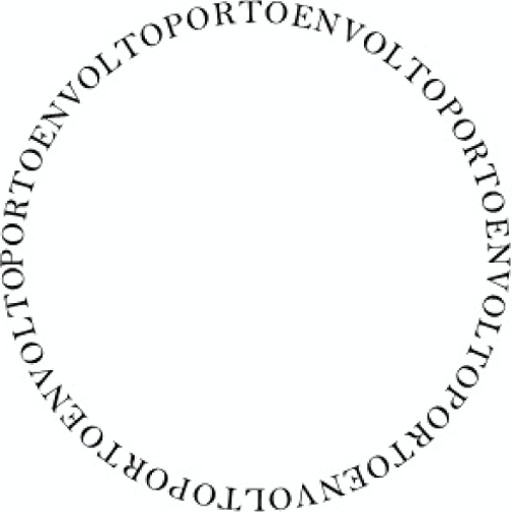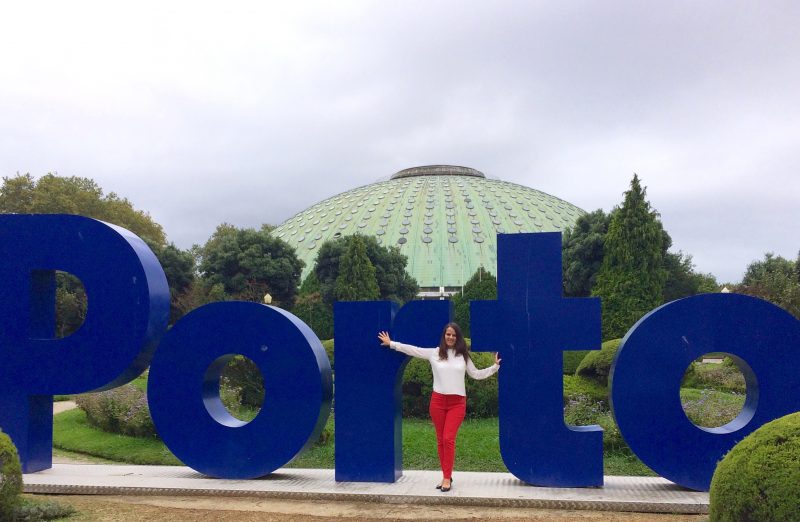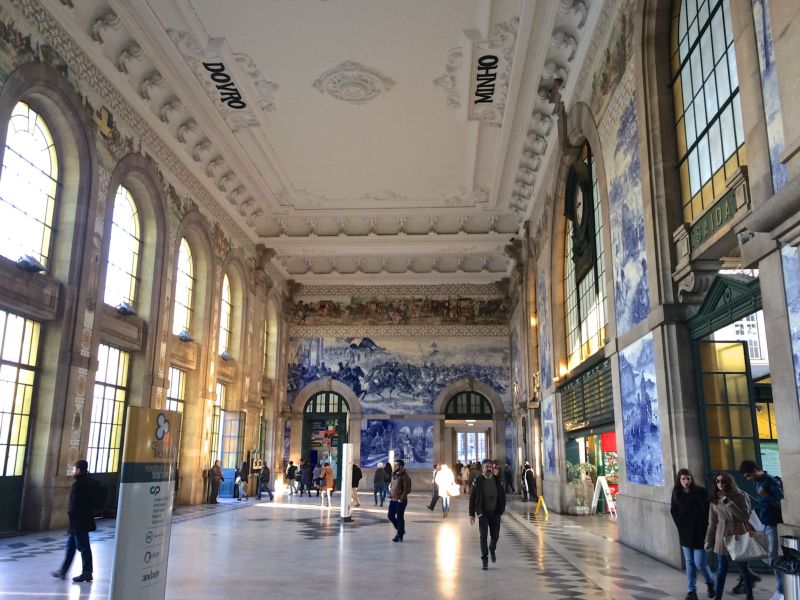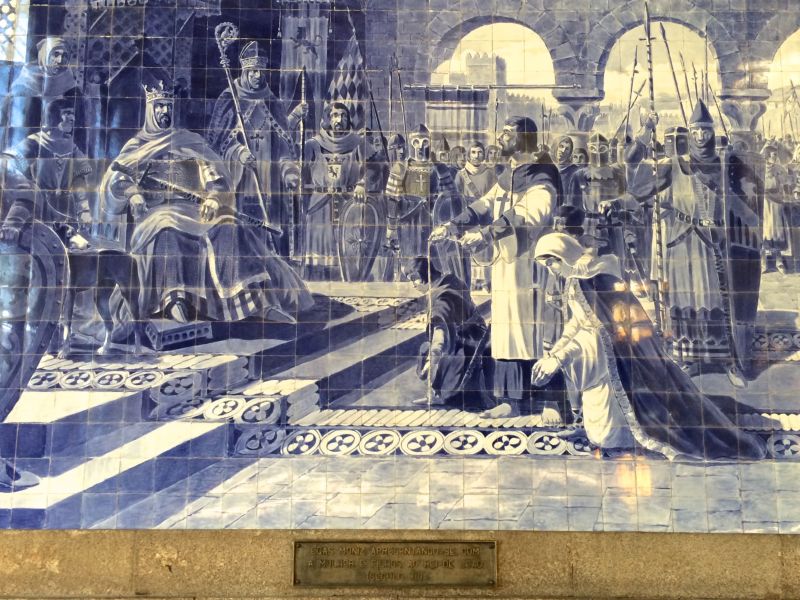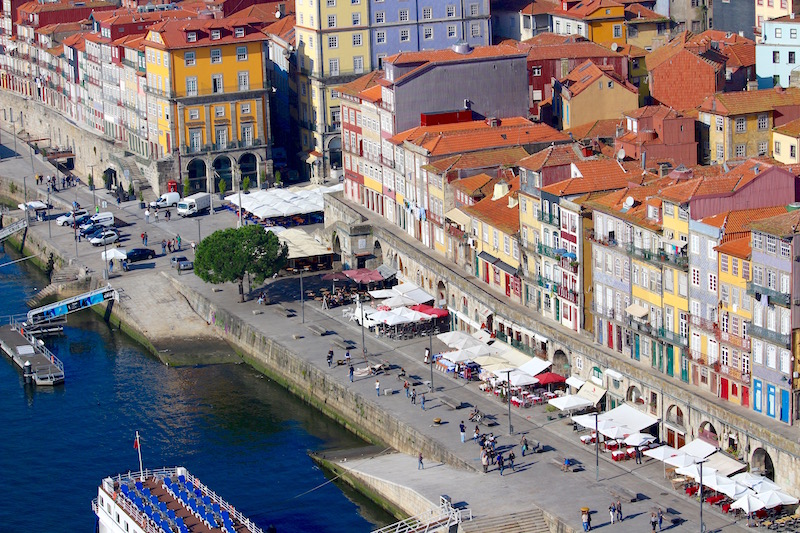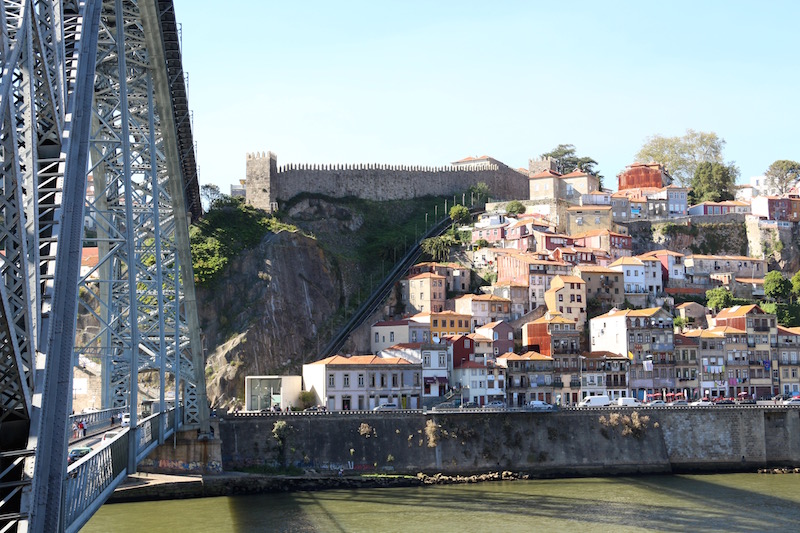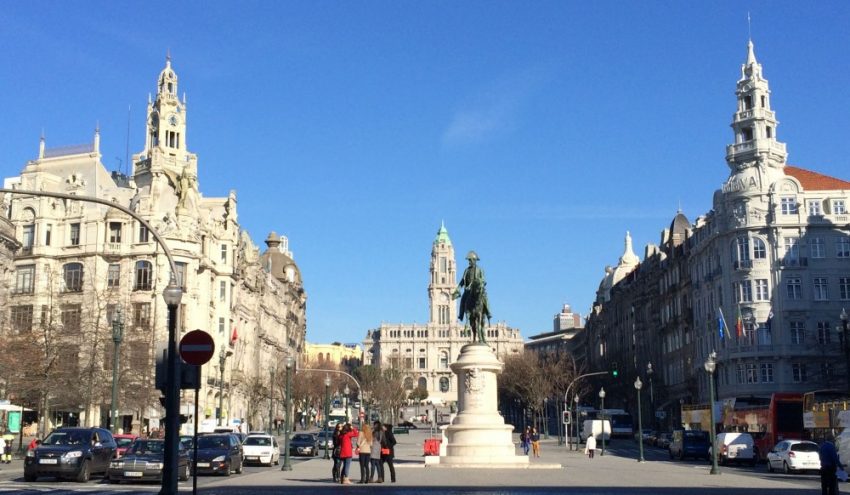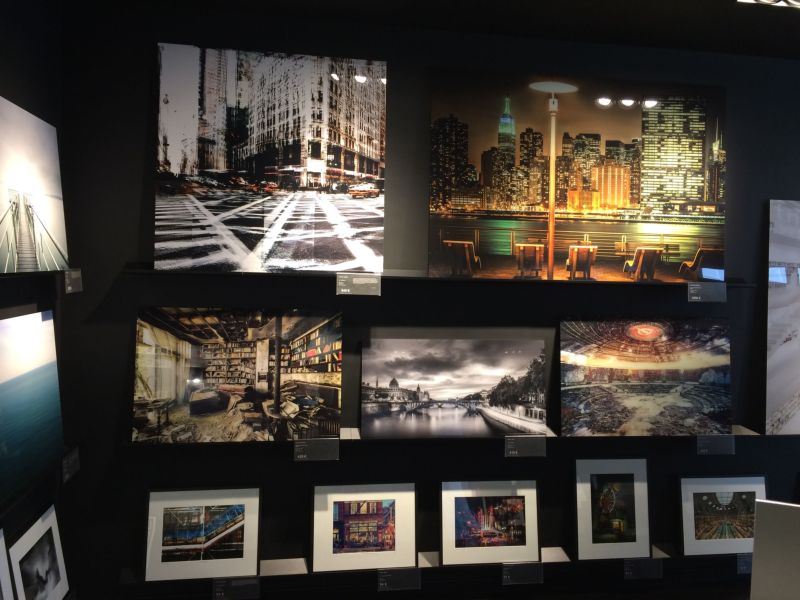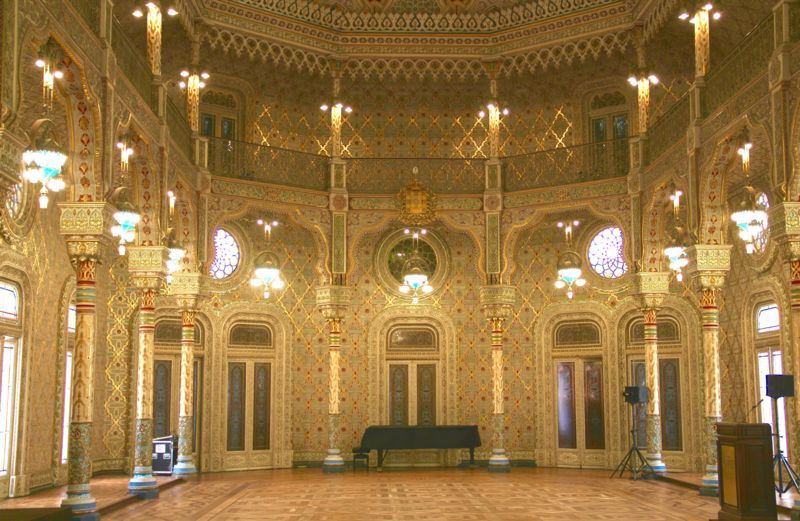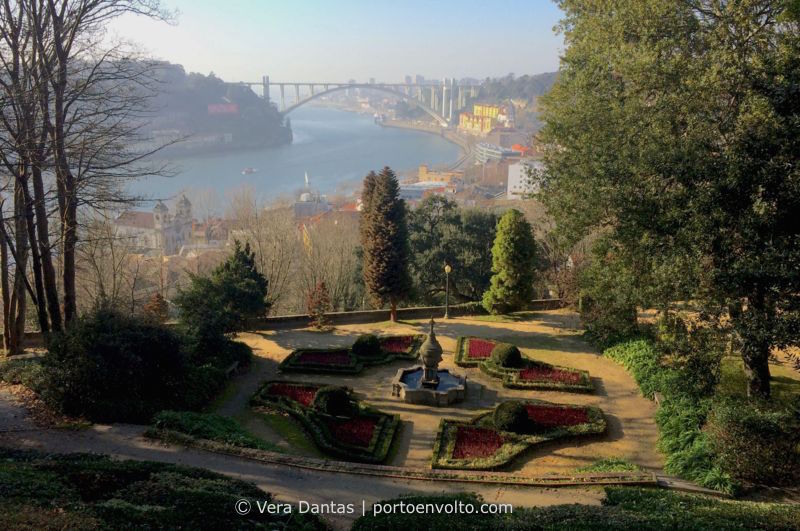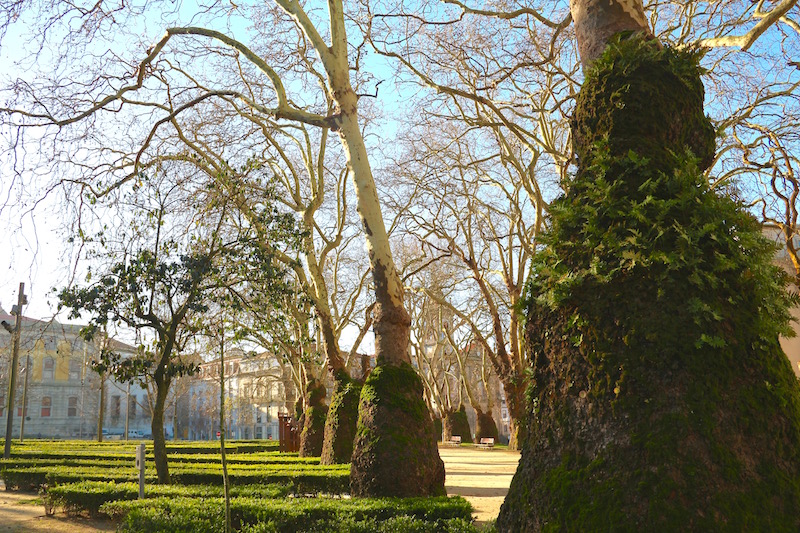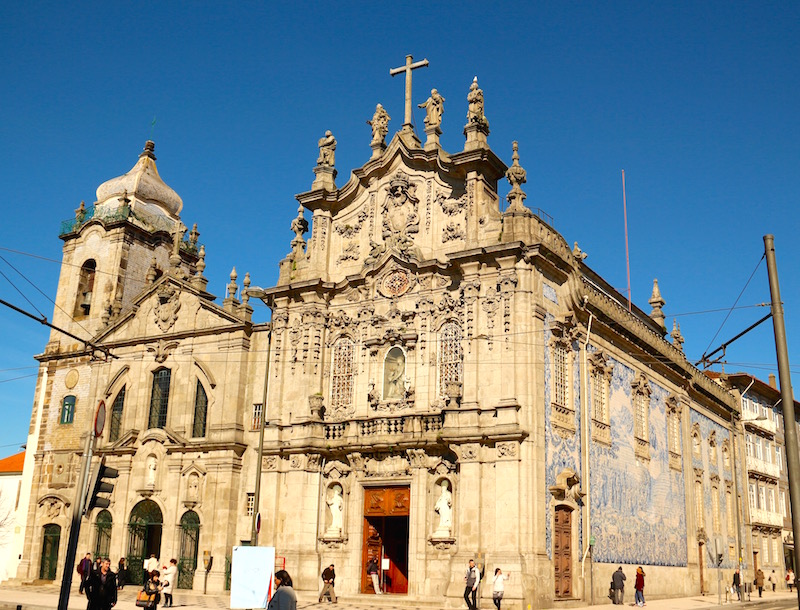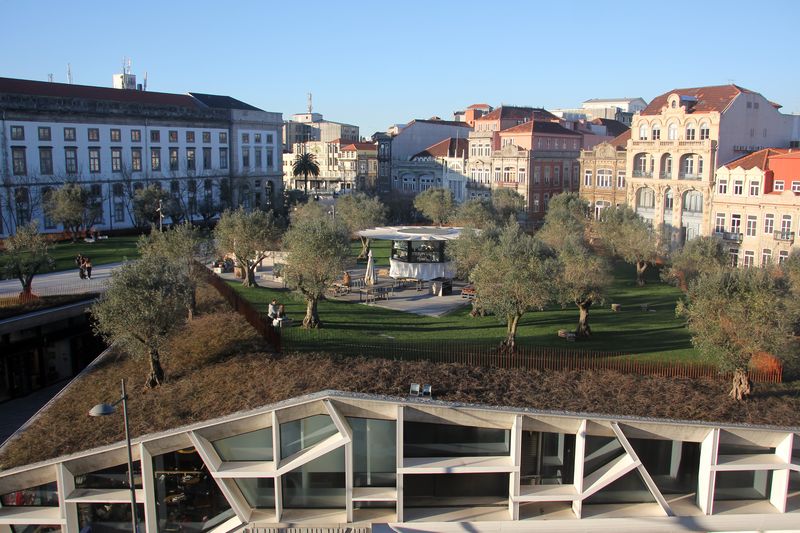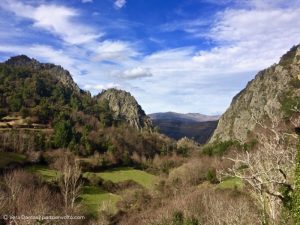O Porto foi eleito o Melhor Destino Europeu de 2017, pela terceira vez desde 2012! Ficou curioso e quer saber porquê ou, melhor ainda, quer descobrir este destino maravilhoso por si mesmo? Então vai precisar do Melhor Guia do Porto em 3 dias! Conheça uma das cidades mais bonitas e vibrantes do mundo no espaço de um fim de semana prolongado. As ruas mais bonitas, os jardins mais românticos, os monumentos com mais história e as zonas mais em voga para descobrir a nossa deliciosa gastronomia e fazer aquelas compras a que não pode, nem deve, resistir.
O percurso que preparei está pensado para ser feito a pé. Sem preocupações sobre onde deixar o carro ou ter de voltar ao ponto de partida, pode usufruir da cidade ao seu ritmo e com total liberdade. Mas conte com muitas paragens pelas ruas da cidade, ou não houvesse a cada esquina um magnetismo irrecusável para contemplar e fotografar os cenários e as paisagens únicas do Porto.
Porto was elected Best European Destination 2017, for the third time since 2012. Are you eager to know why or, even better, do you want to explore this wonderful destination by yourself? With this Ultimate 3 Day Guide to Porto I will introduce you to one of the most beautiful and vibrant cities in the world in a weekend’s time. The most beautiful streets, the romantic gardens, the most impressive monuments and the trendiest neighbourhoods to enjoy our delicious gastronomy and make those shoppings that you cannot, nor should you, resist!
All suggested places are reachable on foot. No worries about where to leave the car or having to return to the starting point, you can enjoy the city at your own pace and with total freedom. But count on many stops on the way, since you’ll want to contemplate and photograph the unique sceneries and landscapes of Porto.
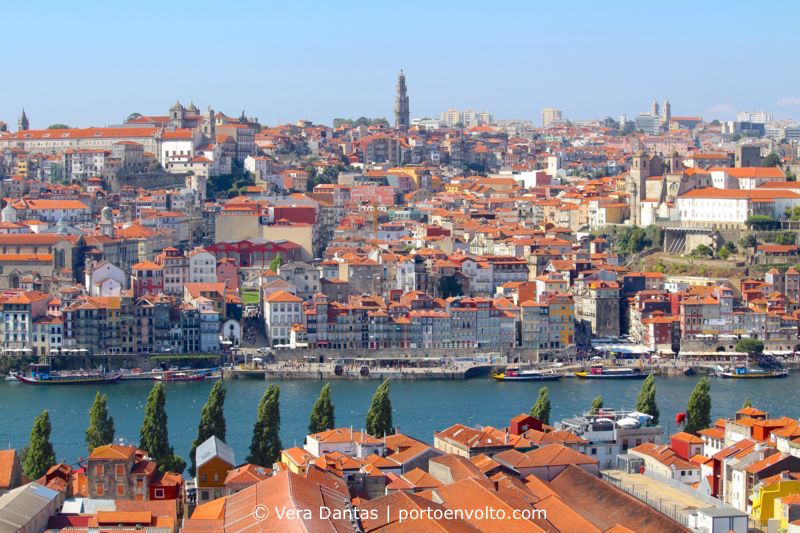
Dia 1: Uma visão geral da cidade e da sua envolvente
Day 1: A general view of the city and its surroundings
Estação de São Bento
No Porto, um bom ponto de partida para descobrir a Baixa é a Estação de São Bento, uma das estações ferroviárias mais bonitas do mundo. Este ano comemora 101 anos e, além da belíssima fachada de influência francesa e da cobertura de vidro e ferro fundido, São Bento surpreende pelo átrio revestido a 20.000 azulejos, um dos maiores monumentos da azulejaria portuguesa. Nos impressionantes painéis de azulejos, o pintor e ceramista Jorge Colaço retratou não só momentos marcantes da História de Portugal, como também a evolução dos transportes e as regiões do país.
In Porto, a good starting point to discover Downtown (Baixa) is São Bento Station, one of the most beautiful railway stations in the world. This year celebrates its 101st anniversary and, in addition to the beautiful façade of French influence and its glass and cast iron roof, São Bento surprises by the atrium covered with 20,000 tiles, one of the greatest monuments of Portuguese tiles. In the impressive tile panels, painter and ceramist Jorge Colaço portrayed not only remarkable moments of the History of Portugal, but also the evolution of transportation and the regions of the country.
Rua das Flores
Logo em frente à estação abre-se uma das artérias mais icónicas do novo Porto: a Rua das Flores. Recentemente renovada, esta rua, além de lindíssima, é morada de sabores tão deliciosos como a Chocolataria Equador e a Chocolataria das Flores – aqui, além de provar chocolates e bolos artesanais, pode sentar-se a saborear um voluptuoso chocolate quente. Mais à frente, do direito, encontra o Museu da Misericórdia do Porto (10-17:30h), com 500 anos de história que se funde com a cidade. Ao lado, a Igreja da Misericórdia, que no século XVIII recebeu uma importante intervenção do artista barroco Nicolau Nasoni. Logo a seguir chegará ao Largo de S. Domingos, um renovado espaço da cidade com arquitectura do século XIX que acolhe duas irresistíveis esplanadas para um almoço memorável e sem pressas.
Just in front of the station you´ll see one of the most iconic arteries of Porto: Rua das Flores. Recently renovated, this beauiful street is home to delicious flavors such as Chocolataria Ecuador and Chocolataria das Flores – here, in addition to sampling chocolates and homemade cakes, you can sit down to savor a voluptuous hot chocolate. A little forward, on the the right, you can visit Museu da Misericórdia do Porto (10 a.m.-17:30 p.m.), with 500 years of history that merges with Porto. Beside it, the Igreja da Misericórdia, which in the eighteenth century received an important intervention of the barroc artist Nicolau Nasoni. Just ahead you’ll reach S. Domingos Square, a XIX century renovated space where you will find two irresistible terraces for a memorable and leisurely lunch.
Ribeira
Desça mais um pouco e entre na Rua da Alfândega para contemplar o exterior da Casa do Infante, antiga Alfândega e Casa da Moeda onde terá nascido o Infante D. Henrique e que agora dispõe de um centro interpretativo dedicado aos Descobrimentos. Logo abaixo chegará à magnífica ribeira do Porto, com o pitoresco Muro dos Bacalhoeiros e um desfile de casas coloridas. Junto aos vestígios da antiga muralha há imensos restaurantes e bares com excelente gastronomia e bons vinhos que convidam à contemplação da paisagem, arrebatada pela visão da Ponte Luiz I. Esta magnífica ponte, uma verdadeira obra de filigrana em ferro, é da autoria de Théophile Seyrig, engenheiro que já havia trabalhado com Gustave Eiffel (o criador da Torre Eiffel em Paris) na Ponte Maria Pia, mais para dentro do rio Douro e visível do tabuleiro superior da Ponte Luiz I.
Walk a little forward and enter Rua da Alfândega to contemplate the exterior of Casa do Infante, former Customs Building and Casa da Moeda, where the Infante D. Henrique was born and now has an interpretive center dedicated to the Discoveries (closed at holidays). Just below you will arrive at the magnificent Porto riverside, with the picturesque Muro dos Bacalhoeiros and typical colorful houses. Next to the remains of the old wall there are plenty of restaurants and bars with tasty food and great wine, where you can gaze at the landscape, dominated by the Luiz I Bridge. This amazing bridge is a masterpiece of Théophile Seyrig, wich had already worked with Gustave Eiffel (the same that built the Eiffel Tower in Paris) in the construction of Maria Pia bridge, inwards Douro river and that you can see from the upper deck of Luiz I Bridge.
Vila Nova de Gaia
As centenárias caves do Vinho do Porto ficam em Gaia, na outra margem. A melhor forma de lá chegar é atravessando o tabuleiro inferior da Ponte Luiz I. Na ribeira de Gaia os espaços ajardinados acompanham o ondular dos barcos rabelo, na água, e a sucessão de caves de Vinho do Porto, em terra, todas abertas ao público com visitas guiadas e provas de vinhos.
Por esta altura já terá reparado nos barcos turísticos que fazem os cruzeiros das Seis Pontes que ligam Porto e Gaia. Estas pequenas viagens permitem admirar a grandiosidade das várias pontes, inclusive da já desactivada Ponte Maria Pia, da autoria de Gustave Eiffel, que a classificou como uma obra construída “no limite das possibilidades clássicas da construção metálica”.
Em alternativa, tome o teleférico que passa por cima dos telhados centenários das caves. A viagem (5€ só ida), embora curta, permite ter a sensação de voar sobre a cidade. Levá-lo-á ao Jardim do Morro, de onde se tem uma vista panorâmica de Gaia e do Porto e do rio serpenteando entre as duas margens até à Ponte da Arrábida, a ocidente. O Mosteiro da Serra do Pilar, junto à paragem do metro, pode também ser visitado. Além do belíssimo claustro circular, tem um zimbório aberto para contemplar a avassaladora paisagem aérea do Porto e Gaia.
Agora volte ao Porto! A melhor maneira de o fazer é mesmo atravessar a pé o tabuleiro superior da Ponte Luiz I.
The centuries old Port Wine cellars are in Gaia, on the other side. The best way to get there is through the lower deck of the Luiz I Bridge. At the Gaia riverside, landscaped gardens and rabelo boats (the typical boats that brought the Port wine barrels from the Douro wine region to Gaia), still on the river, align to create the perfect scenery to visit the Port wine cellars, all with guided visits and wine tasting sessions in several languages.
By this time you will have noticed the tourist boats that take visitors on cruises to admire the Six Bridges Cruises that connect Porto and Gaia cities. These small rides allow you to admire the grandeur of the various bridges, including the already deactivated Ponte Maria Pia, by Gustave Eiffel, which classified it as a work built “at the limit of the classical possibilities of metal construction.”
Alternatively, take the cable car that runs over the centuries-old roofs of the cellars. The trip, although short, allows you to have the feeling of flying over the city. It will take you to Jardim do Morro, where you have a panoramic view of Gaia and Porto and the river meandering between the two banks until it reaches the Arrábida Bridge, to the west. The Monastery of Serra do Pilar, next to the light rail stop, can also be visited. In addition to the beautiful circular cloister, there is a balcony outside the dome to contemplate the overwhelming aerial landscape of Porto and Gaia.
Now go back to Porto! The best way to do this is to walk across the top board of Luiz I Bridge.
Percurso sem sair do Porto:
Tour without leaving Porto:
Muralha Fernandina /Fernandine Wall
Se não quiser atravessar para Gaia, tome o Funicular dos Guindais (8-20h), junto à Ponte Luiz I, que o levará até à Batalha e de onde poderá passear junto à Muralha Fernandina, do século XIV.
Ao descer, do lado esquerdo, vai encontrar a Sé do Porto. Além da visita ao monumento em si, de estrutura romano-gótica com o seu original aspecto de igreja-fortaleza e claustro gótico da época de D. João I, a partir do Terreiro da Sé tem uma das visões mais encantadoras do Porto antigo.
If you do not want to cross to Gaia, take the Funicular dos Guindais (8-20pm), next to Luiz I Bridge, which will take you to Batalha, where you can stroll next to the 14th-century Fernandine Wall.
When descending, on the left side, you will find Porto’s medieval Cathedral. In addition to the visit to the monument itself, a Roman-Gothic structure with its original aspect of church-fortress and Gothic cloister from the time of the king D. João I, its terrace has one of the most enchanting views of the old city.
Avenida dos Aliados /Aliados Avenue
Descendo, regressará à Estação de São Bento. Logo acima, abre-se a Avenida dos Aliados.
Foi inaugurada em 1916, com traça do inglês Barry Parker e é a avenida mais central da cidade, com edifícios ao estilo beaux-arts, num ambiente cosmopolita. No início da avenida situa-se a Praça da Liberdade, com a estátua equestre de D. Pedro IV. Acarinhado pelos portuenses como símbolo da liberdade, o rei doou à cidade o seu coração, que se encontra depositado na Igreja da Lapa. O cimo da avenida é dominado pelo edifício dos Paços do Concelho, em frente do qual a estátua de Almeida Garrett sublinha a ligação umbilical do escritor à cidade.
Descending, you will return to São Bento Station. Just above, the Avenida dos Aliados, Porto’s main boulevard, presents itself.
It was inaugurated in 1916, with the design of the English Barry Parker and is the most central avenue of the city, with beaux-arts buildings in a cosmopolitan atmosphere. At the beginning of the avenue, in Praça da Liberdade, take notice of the equestrian statue of D. Pedro IV. Acclaimed by Porto as a symbol of freedom, by its opposition to his brother absolutist monarchy, the king donated his heart to the city, which is deposited in the Church of Lapa. The top of the avenue is dominated by the Town Hall building, and in front of it a statue of Almeida Garrett, a great Porto writer and defender of liberalism.
Dia 2: Fazer Compras na Baixa, descobrir um Palácio de Ouro e viajar de elétrico pela marginal do rio
Day 2: Shop downtown, visit a Golden Palace and travel by tram along the riverside
Depois de um dia de exploração da cidade, aproveite o sábado de manhã para recuperar forças com as muitas delícias que irá encontrar nas charmosas e antigas moradas de comércio da zona de Santa Catarina. O ideal é sair na estação de metro do Bolhão para este périplo. O dia começa cedo no Mercado do Bolhão, com cores frescas e aromas soltos logo pela manhã. Em frente, mesmo que já tenha tomado o pequeno-almoço, não deixe de entrar na Confeitaria do Bolhão, onde as delícias doces se conjugam com os belíssimos baixos relevos de arte nova. Logo ao lado, a mais icónica mercearia tradicional do Porto: a Pérola do Bolhão, com uma fachada Arte Nova conjugada com azulejos ilustrativos da rota das especiarias, mantém o charme de outrora e continua nas mãos dos descendentes do seu fundador. Se é fã de compras, não deixe de explorar as lojas do melhor comércio do Porto na vizinha Rua de Santa Catarina. Se é fã de fotografia visite a loja de fotografia de arte Yellowkorner, vale bem a pena!
After a day exploring the city, regain strength with the many delights you will find in the charming and old shops of the Santa Catarina area. The ideal is to get off at Bolhão metro station for this tour. The day starts early in the Bolhão market, the oldest and most traditional open air market filled with fresh colors and scents. In front of it, Confeitaria do Bolhão combines sweet delights with the beautiful low reliefs of Art Nouveau. Next door is the most iconic traditional grocery store in Porto: Pérola do Bolhão, with an Art Nouveau façade combined with tiles that remind us of the spices route. If your’re a shop lover, explore Porto’s main shopping street nearby, Rua de Santa Catarina. Fans of photography be sure to visit Yellowkorner, art photography boutique – it’s well worth it.
Depois de um périplo pelas ruas do melhor comércio da cidade, porque não conhecer o grande edifício neoclássico construído pela Associação Comercial do Porto? Na Rua Ferreira Borges, o Palácio da Bolsa tem 13 espaços visitáveis únicos, mas o mais impressionante é o Salão Árabe de estilização mourisca e profusamente revestido a folha de ouro, numa demonstração sumptuosa do poderio económico e político da classe burguesa do século XIX.
Mais abaixo encontrará o mais proeminente templo em estilo gótico do Porto, a Igreja Monumento de São Francisco de Assis, com um exuberante trabalho Barroco em talha dourada.
After a tour through the streets of the best shops in the city, why not know the great neoclassical building built by the Commercial Association of Porto? At Rua Ferreira Borges, Palácio da Bolsa has 13 unique visitable spaces, but the most striking is the Moorish Salon of Moorish styling and lavishly lined with gold leaf in a sumptuous demonstration of the economic and political power of the bourgeois class of the nineteenth century.
Below you will find the most prominent Gothic-style temple in Porto, the Church of San Francisco de Assis Monument, with an exuberant Baroque work in gilded woodwork.
Mesmo em frente, há uma paragem da Linha 1 do elétrico histórico. Uma viagem nesta linha ribeirinha é uma das mais aprazíveis que pode fazer para desfrutar da marginal do rio Douro até à Foz, uma das partes mais nobres da Invicta.
Just in front, there is a stop of Line 1 of the historic tram. A trip on this Line is one of the most pleasant you can do to enjoy the riverside of Porto up until the Foz, the chic part of the city where the river Douro meets the Atlantic Ocean.
Dia 3: Jardins do Palácio de Cristal e Clérigos
Day 3: Crystal Palace Gardens and Clérigos
Comece o dia com um passeio pelos Jardins Românticos do Palácio de Cristal (8-19h). Do Jardim Émille David, à entrada, passando pela Avenida das Tílias, até aos lagos e miradouros em todos os percursos deste espaço verde, aproveitem ainda para se deleitarem com as cores das camélias, as flores do Porto.
Start the day with a stroll through the Romantic Gardens of the Crystal Palace (8 am to 7 pm). From the Émille David Garden, at the entrance, through Avenida das Tílias, to the lakes and viewpoints in all the paths of this green space, also indulge yourself with the colors of the many camellia trees, knowing that camellias are the flowers of Porto.
Siga para os Clérigos a pé ou num dos vários autocarros que param à frente do jardim e pare na Cordoaria.
Walk to Clerigos on foot or take one of the buses that pass in front of the gardens and step off at Cordoaria.
Chegado à Cordoaria atravesse a impressionante avenida de plátanos do jardim e siga para a Praça dos Leões, um espaço aberto de onde poderá apreciar o conjunto cenográfico de grande impacto formado pelas igrejas das Carmelitas Descalças e do Carmo, dos séculos XVII e XVIII respectivamente, destacando-se esta última pela fachada revestida a azulejos.
Arriving at Cordoaria, walk along the garden and head to the nearby Lions Square, where you can appreciate the scenographic set of great impact formed by the churches of Carmelitas Descalços and Carmos, from the XVII and XVIII century, the latter outstanding for its tile covered façade.
Desça à esquerda para a Rua das Carmelitas e contemple a Livraria Lello, uma das mais belas do mundo. A fachada foi recentemente renovada e está tal como foi concebida há 101 anos. Se tiver tempo, entre e suba a escadaria escarlate e maravilhe-se com o vitral do tecto.
Go down to the left to Carmelitas Street and contemplate Lello Bookstore, one of the most beautiful in the world. The façade has been recently renovated and is as it was conceived 101 years ago. If you have some time, visit the inside, climb the red staircase and gaze at the stained glass ceiling.
Atravesse o Passeio dos Clérigos, com algumas das lojas mais elegantes da cidade, para chegar à Torre dos Clérigos, o símbolo mais icónico do Porto, juntamente com a Ponte Luiz I. Não deverá perder a oportunidade de subir até ao zimbório e contemplar a cidade a 76 metros de altitude – é a melhor vista do Porto! Para se recompor do esforço, desça até à Igreja dos Clérigos e assista a um concerto de órgão gratuito, diariamente às 12h00.Cá fora aproveitem para almoçar num dos muitos restaurantes da vizinhança. A partir dos Clérigos, caminhe para ocidente em direcção ao grande largo que Largo Amor de Perdição, assim chamado em homenagem a Camilo Castelo Branco, que esteve preso, por adultério com a sua amante e futura mulher, no grande edifício da ex-Cadeia e Tribunal da Relação. Hoje é sede do Centro Português de Fotografia, cuja visita não o deixará indiferente, seja pelo edifício em si, seja pelas exposições temporárias, de entrada livre.
Pode ter que se despedir do Porto, mas partirá com uma bagagem recheada de emoções, que o farão regressar em breve.
Cross the Clérigos Promenade, with some of the most elegant shops in the city, to reach the Clérigos Tower, the most iconic symbol of Porto, alongside Luiz I Bridge. You should not miss the opportunity to climb to the dome and contemplate the city at a height of 76 meters – you’ll be rewarded with the best view of Porto! To regain the effort, head down to the Church of the Clergy and attend a free organ concert every day at 12 noon. Enjoy lunch at one of the many nearby restaurants. From Clérigos, walk west towards the great Largo de Perdição, named after Camilo Castelo Branco, who was imprisoned for adultery with his lover and future wife, in the great building of the former Chain and Court of Relation which today is the Portuguese Center of Photography . If you have to bid farewell to Porto, do so with a bag full of emotions, which I am sure will make you return soon.
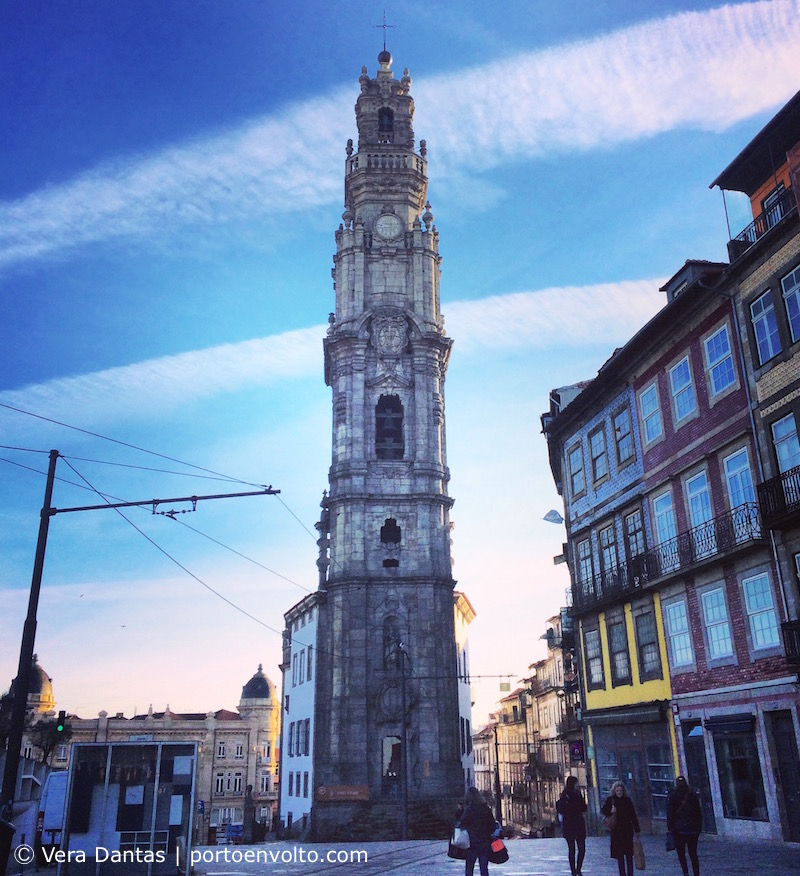
Precisam de ajuda para conhecer a cidade? Então falem comigo! Levo-os numa visita inesquecível pelo Porto, Melhor Destino Europeu 2017! Contacte-me aqui.
Need help getting around? Then let me know and I’ll take you on an unforgettable tour trough Porto, European Best Destination 2017! Contact me here.
